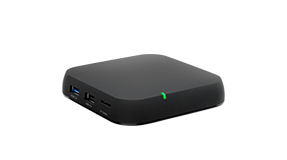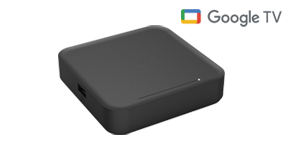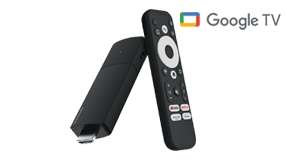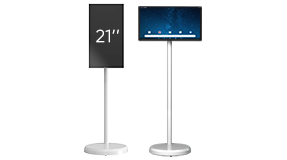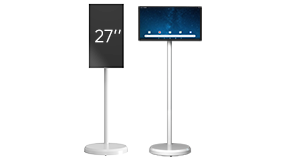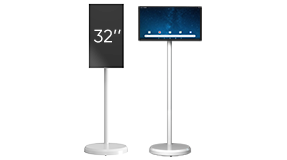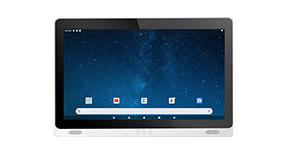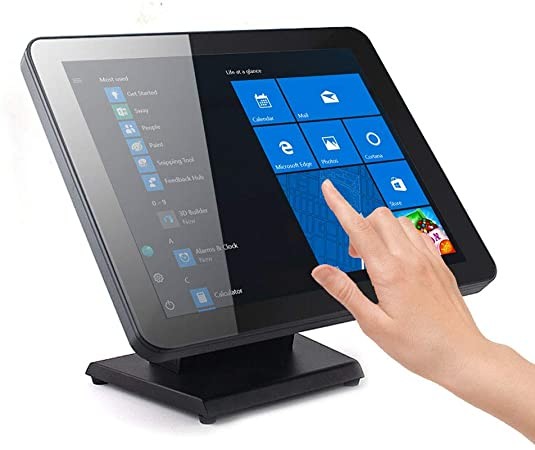
Interactive touch panels are the realm of modern learning, these panels are the stars, bringing lessons to life. They turn classrooms into vibrant hubs of collaboration and engagement. Now, let’s research why these touch panels are not just tools but transformative keys to an interactive and effective learning experience.
Components of Interactive Touch Panels
Display Screen
At the heart of every interactive touch panel lies a vibrant display screen, transforming ordinary surfaces into dynamic interfaces. These screens, available in various sizes, showcase vivid visuals and play a pivotal role in delivering an immersive user experience. The quality of the display screen is a crucial factor in ensuring clear, crisp visuals that capture attention and convey information effectively.
Touch Sensors
Touch sensors act as the intuitive fingertips of interactive touch panels. Positioned above the display screen, they detect and respond to touch, allowing users to interact effortlessly with the content. Capacitive and resistive touch sensors are common types, each offering unique advantages. The sensitivity and responsiveness of these sensors contribute to the overall usability and user satisfaction of the interactive touch panel.
Processor and Interface
Behind the scenes, a powerful processor acts as the brain of the interactive touch panel. It processes touch inputs, manages data, and ensures smooth navigation. The user interface, facilitated by the processor, determines how users interact with the content displayed. An intuitive and user-friendly interface enhances the overall experience, making the interactive touch panel accessible to users of all ages and backgrounds.
Connectivity Options
The versatility of interactive touch panels is amplified by a range of connectivity options. These panels often come equipped with various ports such as USB, HDMI, and wireless connectivity features like Bluetooth and Wi-Fi. These options facilitate seamless integration with external devices, making it easy to share and collaborate on content. The flexibility in connectivity ensures that interactive touch panels adapt to different environments and accommodate diverse user preferences.
Types of Interactive Touch Panels
The enchanting array of touch panels makes these devices so captivating.
Capacitive Touch Panels
Capacitive touch panels are the modern maestros, responding to the gentlest of touches with precision and speed. Common in smartphones and tablets, they use the body’s electrical charge to detect touch, offering a seamless and highly responsive interaction. The smooth, glass surface enhances user comfort and ensures a delightful touch experience, making capacitive touch panels a favorite in various interactive applications.
Resistive Touch Panels
Resistive touch panels embrace a different dance, relying on pressure to detect touch. Comprising multiple layers, they respond to physical pressure applied to the screen. Widely used in industrial settings and certain educational applications, resistive touch panels are durable and can be operated with a stylus or gloved hands. While not as sensitive as capacitive panels, they provide versatility and reliability in environments with varying conditions.
Infrared Touch Panels
Stepping into the realm of infrared touch panels, we encounter an invisible web of beams. Positioned around the screen, infrared sensors detect disruptions caused by touch, allowing for precise and quick responses. This technology eliminates the need for an overlay on the display, maintaining optical clarity. Commonly found in large interactive displays and kiosks, infrared touch panels offer robust performance and are resistant to scratches and surface damage.
Optical Touch Panels
Optical touch panels harness the power of light to create a touch-sensitive masterpiece. Placed at the screen’s edges, infrared light is directed across the surface. When touch disrupts this light, sensors detect the interaction. Optical touch panels excel in large-format displays, providing high accuracy and reliability. Their ability to support multi-touch gestures makes them suitable for collaborative environments, fostering interactive learning and dynamic presentations.
Applications of Interactive Touch Panels
Education Sector
In the educational landscape, interactive touch panels have become the maestros of engagement. They adorn classrooms, fostering interactive learning experiences. From dynamic presentations to collaborative activities, these panels enhance student participation, making lessons more captivating and memorable. Teachers navigate through subjects effortlessly, creating an immersive educational environment that caters to different learning styles.
Business and Conference Rooms
Boardrooms and conference rooms witness a technological revolution with the inclusion of interactive touch panels. Facilitating seamless presentations and collaborative discussions, these panels elevate meetings to new heights. With touch-enabled annotations, brainstorming becomes dynamic, decisions are made efficiently, and the overall engagement of participants is heightened, fostering a culture of innovation and productivity.
Healthcare Industry
In healthcare, interactive touch panels take on a healing role. From patient education to collaborative discussions among medical professionals, these panels enhance communication and streamline information sharing. Surgical suites integrate touch panels for precision and efficiency, contributing to advancements in medical procedures. The intuitive interface aids healthcare professionals in accessing and interpreting patient data with ease.
Retail and Point of Sale
Retail spaces have embraced interactive touch panels to redefine customer experiences. From self-service kiosks to interactive product displays, these panels offer a user-friendly interface for customers to explore products and make informed decisions. In point-of-sale systems, touch panels facilitate quick and secure transactions, enhancing the overall shopping experience.
Entertainment and Gaming
Interactive touch panels bring a new dimension to entertainment and gaming. In gaming arcades or at-home setups, these panels provide an immersive and responsive interface for gamers. From educational games for children to complex simulations for enthusiasts, touch panels contribute to the evolution of gaming experiences, making them more engaging and interactive.
Advantages of Interactive Touch Panels
Interactive touch panels emerge as dynamic allies in various sectors, weaving a tapestry of benefits that enhance user experiences and transform traditional ways of learning, working, and presenting.
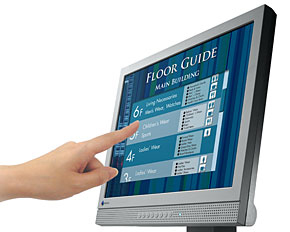
- Enhanced User Engagement: The magic begins with heightened user engagement. Interactive touch panels captivate attention through vibrant visuals and tactile interactions, making learning, presentations, and collaborative tasks more captivating and memorable.
- Collaborative Learning and Work: The true strength of interactive touch panels lies in fostering collaboration. In educational settings, students collaborate seamlessly, contributing to a richer learning environment. In business, teams engage in dynamic discussions, leading to innovative solutions and improved productivity.
- Improved Presentations: Bid farewell to monotonous presentations with the infusion of interactive touch panels. Presenters navigate through content effortlessly, annotating key points, and involving the audience actively. This dynamic approach transforms presentations into interactive experiences, leaving a lasting impression.
Which interactive touch panel is best?
In the realm of interactive touch panels, Shenzhen DataMax Technology Co., Ltd stands out as a beacon of quality and innovation. Renowned for its cutting-edge technology and user-friendly interfaces, DataMax offers a range of panels suitable for diverse needs. From classrooms to boardrooms, their panels excel in enhancing engagement, collaboration, and presentations.
Final Words
In wrapping up our journey through the importance of interactive touch panels, it’s clear that these devices are the magic wands of education. They make learning a thrilling adventure, unlocking doors to understanding and teamwork. The interactive touch panel isn’t just a piece of technology; it’s a gateway to a brighter, more interactive future in education.

